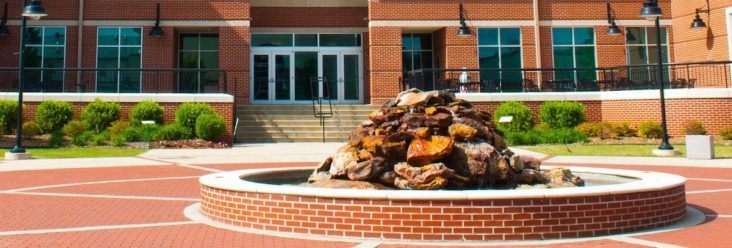NWACC will not hire replacement for top communications position to save money
by January 11, 2017 12:46 pm 493 views

The top communications official at NorthWest Arkansas Community College in Bentonville has resigned, and the school’s president has chosen not to refill the position, NWACC announced on Wednesday (Jan. 11).
Steven Hinds, who has served as executive director of public relations and marketing since 2012, is leaving “to pursue other opportunities,” according to an NWACC press release. President Evelyn Jorgenson said the decision to rearrange staff duties rather than hire a new public relations and marketing director is tied to an ongoing effort to save money by streamlining the school’s administration staff.
Lisa Anderson, former executive director of institutional effectiveness and grants, has assumed leadership of the communications department and will serve as the primary media contact. This is in addition to other duties in her new role as executive director of planning, effectiveness and public relations. Anderson has worked at NWACC seven years, and the restructuring means a return to a department she’s worked in before, as director of communications and outreach. She is also now part of the president’s leadership cabinet for the school.
Other responsibilities that fell under Hinds’ purview will be divided between former marketing manager Dianna Winters-Lewis, who will become director of marketing and creative services, and former social media specialist Daniel Yeager, who will move into the role of digital marketing specialist, according to the press release.
Anderson said she did not know what Hinds’ next move is, but he “started talking about it in December.” Hinds was not immediately available for comment. His last official day is Friday (Jan. 13). It is unknown whether he is still doing work through his company, Hinds Consulting, which he founded in 2007.
He formerly worked in public relations for Arvest Bank and was recognized as a member of the Northwest Arkansas Business Journal’s Forty Under 40 class in 2001.
CUTTING BUDGETS
President Jorgenson said in the press release: “Governor (Asa) Hutchinson has called upon higher education institutions to be as efficient as possible. This is just one more example of how NWACC seeks to accomplish that by being the best stewards of taxpayer dollars that we possibly can be.”
In 2014, Hinds reported the school was tightening up the budget in a myriad of ways in the face of reduced government funding for public higher education institutions.
He said the streamlining of administrative staff was a way the college was saving money and keeping tuition relatively steady. Other efforts that collectively saved hundreds of thousands of dollars include closing the school’s café at the Center for Nonprofits in Rogers, switching to digital rather than paper for many things, cutting out unnecessary memberships and subscriptions, partnering with a local organization for free internet access and renegotiating its telephone service, which Hinds said saved $40,700 a year.
NWACC is not alone in its funding struggle. While data show an overall modest increase in government funding for public universities from 2014 to 2016, funding for Arkansas schools decreased about 1.4% during that time period, according to the annual Grapevine report, published Jan. 25, 2016, by the Illinois State University College of Education.
Data show the funding issue is nothing new. Schools in every state except Alaska and North Carolina experienced state funding decreases between 2008 and 2014, according to a previous Grapevine report. The amount of state funding Arkansas lost between 2008 and 2014 was 22.5%, just under the 23% national average.
Meanwhile, costs continue to rise, and most universities have sharply increased tuition in recent years. In fact, the national average for the rise in college tuition from 2004 to 2014 – although the data also includes private universities – is 36%, according to data from the College Board Annual Survey of Colleges and the National Center for Education Statistics.
